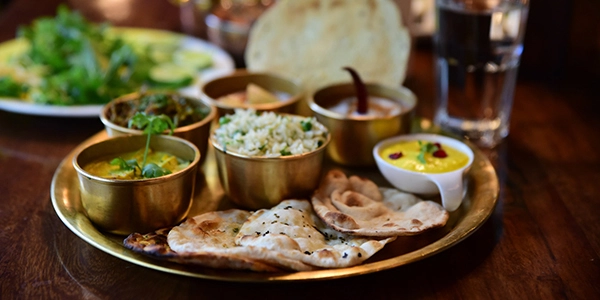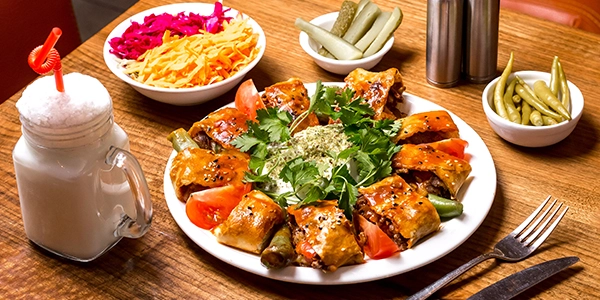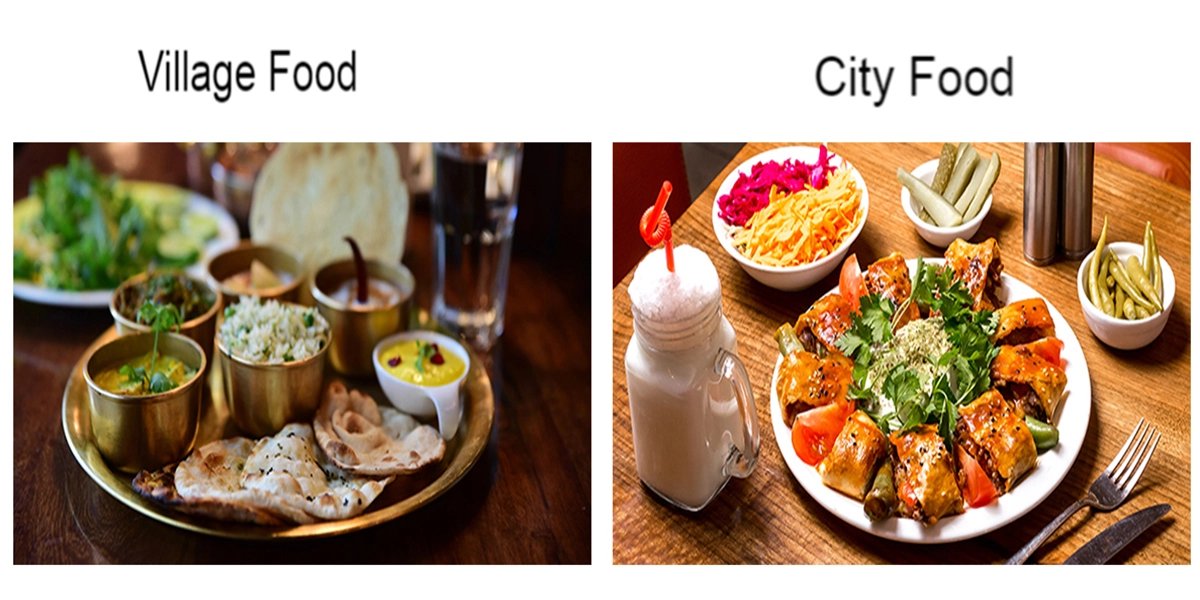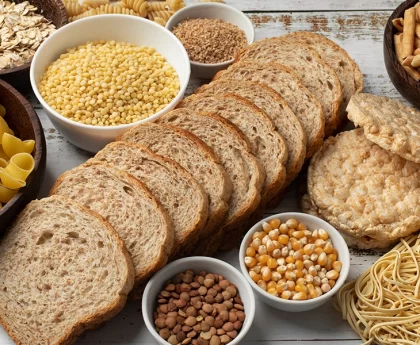The distinction between village food and city food primarily lies in the ingredients, preparation methods, cultural influences, and availability of resources.
Here are some key differences:
- Ingredients and Sourcing:
– Village Food: In rural areas, food often relies heavily on locally sourced ingredients, such as fresh vegetables, fruits, grains, and dairy products produced within the village or nearby regions. Hunting, fishing, and farming might also play a significant role in providing ingredients.
– City Food: Urban areas have access to a wider variety of ingredients due to transportation networks. There’s greater reliance on packaged and processed foods, as well as imported ingredients. The variety and diversity of ingredients can be much higher in cities. - Freshness and Seasonality:
– Village Food: Food in villages is often fresher and more seasonal, as it’s directly sourced from local farms and gardens. Seasonal availability strongly influences the dishes prepared.
– City Food: In cities, due to transportation and storage capabilities, ingredients can be available year-round regardless of the season. This might lead to a diminished emphasis on seasonality. - Preparation Methods:
– Village Food: Traditional cooking techniques are more prevalent in villages. Cooking might involve open fires, clay ovens, and other traditional methods, which can impart unique flavors to the dishes.
– City Food: In cities, modern cooking appliances and techniques are widely used. Electric stoves, ovens, microwaves, and other modern kitchen equipment are more common. - Cultural Influences:
– Village Food: Traditional recipes and cultural practices have a stronger influence on village food. Recipes are often passed down through generations, preserving the culinary heritage of the region.
– City Food: Urban areas are more cosmopolitan and diverse, leading to fusion cuisines and a broader range of culinary influences. City food can incorporate global flavors and trends. - Portion Sizes and Food Habits:
– Village Food: Portion sizes in villages might be larger, as people are often engaged in physical labor. Meals are usually hearty and focused on providing energy for daily activities.
– City Food: Portion sizes in cities might be more controlled, and there could be a greater emphasis on healthier eating due to sedentary lifestyles and awareness of dietary concerns. - Food Accessibility and Availability:
– Village Food: Villages might have limited access to certain foods due to geographical and logistical constraints. People often rely on what they can produce locally.
– City Food: Urban areas have better access to a wide variety of foods due to markets, grocery stores, and international food chains. - Social Dynamics and Events:
– Village Food: Eating in villages can be a communal experience, with shared meals being a common occurrence during festivals and gatherings.
– City Food: Urban lifestyles might lead to more individualized eating habits, with people often dining out or ordering food for convenience.
It’s important to note that these distinctions are not absolute and can vary widely depending on the specific village or city, cultural practices, and socioeconomic factors. As both rural and urban areas continue to evolve, the lines between village food and city food can become blurred due to globalization and changing food trends.

Why is village food is tastier and purest than city Food?
The perception that village food is tastier and purer than city food is subjective and can vary based on individual preferences and cultural biases. However,
there are certain factors that can contribute to this perception:
- Freshness and Seasonality: Village food often relies on locally sourced, fresh ingredients that are in season. This can enhance the flavors and textures of dishes, as ingredients are at their peak freshness. In contrast, city food might sometimes rely on preserved, imported, or out-of-season ingredients, which could impact taste.
- Traditional Cooking Methods: Many villages maintain traditional cooking techniques, such as open-fire cooking, clay ovens, and slow-cooking methods. These methods can impart unique flavors to the food and create a sense of nostalgia that enhances the dining experience.
- Minimal Processing: Village food often involves minimal processing and uses whole, unprocessed ingredients. This can lead to more pronounced natural flavors and textures in dishes. In contrast, city food might include more processed and packaged ingredients that can sometimes dull the flavors.
- Culinary Heritage: Village recipes and culinary practices are often passed down through generations, preserving traditional flavors and techniques. This sense of authenticity and connection to cultural heritage can contribute to the perception of tastiness and purity.
- Local Varieties: Villages often cultivate heirloom or locally adapted varieties of crops and livestock, which can have unique flavors and qualities not found in commercialized city food.
- Closeness to the Source: In villages, people often have a direct connection to the source of their food, whether it’s grown in their own gardens or obtained from nearby farms. This connection can create a deeper appreciation for the food’s origins and contribute to the perception of purity.
- Emphasis on Nutritional Value: Village food might prioritize nutritional value and traditional dietary practices, which can lead to well-balanced and flavorful meals.
- Cultural Context: The atmosphere in which village food is prepared and consumed, often in a communal and relaxed setting, can enhance the overall dining experience and make the food taste better.
It’s worth noting that the perception of tastiness and purity can also be influenced by romanticized notions of rural life, nostalgia, and personal preferences. City food, too, has its own advantages, such as access to a wider variety of ingredients, culinary diversity, and innovative cooking techniques. Additionally, as urban areas develop, there can be efforts to promote locally sourced and traditional foods in city settings, bridging the gap between village and city food perceptions.

Benefits of cooking food on mud Chulha?
Cooking food on a mud chulha (clay stove or hearth) has several benefits, especially in traditional and rural settings.
Here are some of the advantages:
- Natural Flavors: Mud chulhas are known to enhance the natural flavors of food. The clay imparts a unique earthy aroma and taste to the dishes, contributing to a more authentic and satisfying culinary experience.
- Slow Cooking: Mud chulhas are often used for slow cooking, which allows flavors to develop over time. This results in tender and flavorful dishes that are well-cooked and infused with the essence of the ingredients.
- Even Heat Distribution: Clay stoves distribute heat evenly, reducing the risk of uneven cooking. This is particularly important when preparing dishes that require consistent heat for optimal results.
- Retains Nutrients: The gentle, slow heat of a mud chulha can help retain more nutrients in the food compared to faster cooking methods that might lead to nutrient loss.
- Low Environmental Impact: Mud chulhas are eco-friendly and have a lower carbon footprint compared to gas or electric stoves. They use renewable resources, such as wood or biomass, for fuel, which can be locally sourced.
- Cultural Significance: Cooking on a mud chulha carries cultural significance in many communities. It is often seen as a way to connect with tradition, history, and local heritage, which adds to the overall dining experience.
- Community and Social Aspects: Cooking on a mud chulha can be a communal activity. In villages, families might gather around the chulha, sharing stories and bonding while preparing meals together.
- Health Benefits: Mud chulhas produce less smoke compared to open fires, which can improve indoor air quality and reduce the risks of respiratory issues associated with prolonged exposure to smoke.
- Affordability: Mud chulhas are relatively inexpensive to construct and maintain, making them a practical option for households with limited resources.
- Aesthetic Appeal: Mud chulhas can add a rustic and charming element to the kitchen or cooking area, enhancing the visual appeal of the surroundings.
- Connection to Nature: Cooking on a mud chulha can foster a connection to nature and the elements. This connection might be valued for its grounding and calming effects.
While mud chulhas have these benefits, it’s important to note that they also have some limitations. They require proper maintenance to prevent cracking, and their efficiency might vary based on the type of fuel used. Additionally, in some cases, modern cooking techniques might be more convenient and efficient, especially in urban areas. The choice of cooking method often depends on a combination of cultural, practical, and environmental factors.
Junk Food Impacts Advantages Effects & More
World’s most Nutritious and Healthy foods
Read this Article Also:- Boost Your Oxygen Levels With 15 Best Oxygen Rich Foods & Benefitson
If you don’t like this article/post please share your feedback.





